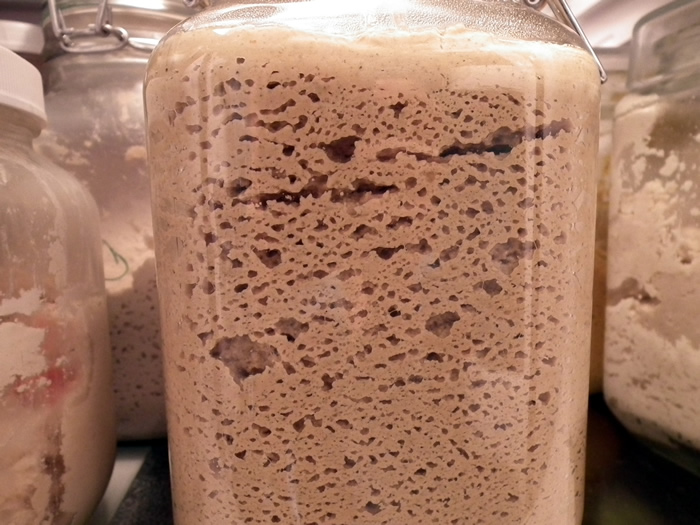
Leberwurst loving individual to whom this recipe is dedicated:
“I kept eating it and thinking, is this leberwurst? It tastes just like leberwurst… It feels just like leberwurst… Then I really liked it! Now I feel bad because it’s so much like um… meat stuff…”
Me:
“I spent all this time trying to find a way to make a nut taste like meat for you, and now you don’t like it because it tastes like meat! Damn you and your hate for science!!”
Transmutation success! Now I am here to share this uncanny tactic with anyone who may be willing to make the sunflower nut taste like leberwurst.
For more in-dept-age about lactofermenting nut cheeses and pastes drop by my other post here.
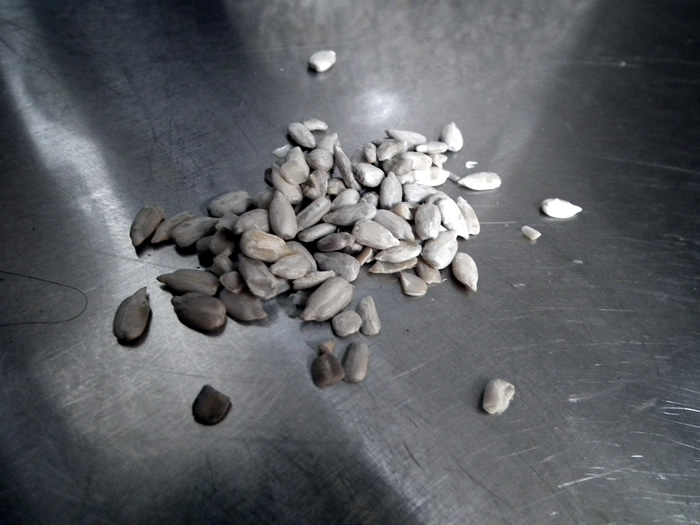
Basically what this involves is taking sunflower seeds and a Kimchi (or any other mix of lactofermented vegetables) grinding them up with spices, and letting the freshly ground seeds secondary ferment with the ground vegetables. Any of these nut and seed cheeses or faux pâtés are secondary ferments with lactofermented vegetables. It’s fun, easy, healthy, and tastes good enough so that anyone introduced to raw vegan eating won’t miss milk products.
Any diet shouldn’t be boring. It’s only limited to culinary imagination. In my opinion the raw method of cooking can often lend a more superior hand when it comes to bringing out flavors as the taste of the spices isn’t dulled by the cooking process, so the finer tones of flavor, that would often be overshadowed by the way everything blends into an incomprehensible goo, are still there. Nothing is dulled. It’s very fine, and easy to totally take off with all the techniques of livening up living food… Like by means of curing, sun-drying, lactofermenting, etc. It’s great fun.
I’m consistently put to the challenge of re-creating an imitation of a common cooked food. With the proper imagination and use of spices you can make anything taste like anything. Herbs and spices are like colors. Mastering eloquent combinations in using them, empowers the cook to bring out all the desired flavors/feels of the ingredients.
If you get into your own fermented nut and seed cheese/pâté making you’ll soon notice it’s a lot like beer or wine making. Each nut/seed will have it’s own unique flavor and depth. Depending on weather conditions and times of the month and year, each batch you brew will always be different.
What You’ll Need:
*Raw kimchi. I recommend one primarily made up of onions, broccoli, carrot, cauliflower, garlic… But any will do.
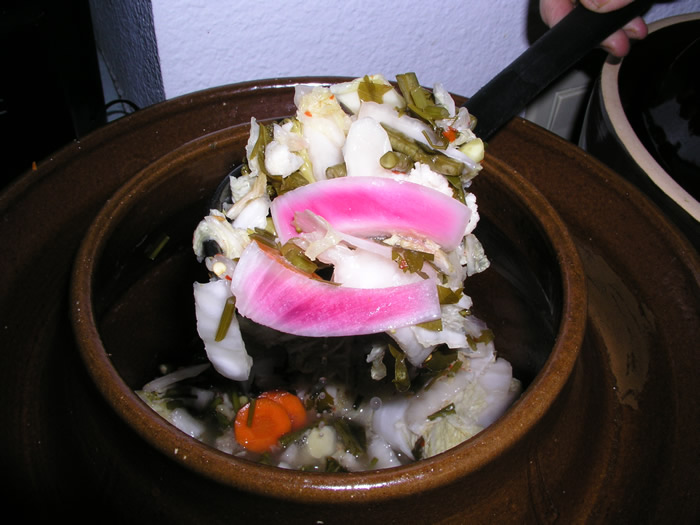
*Optional spices (Mountain Rose Herbs are highly recommended)
You don’t necessarily have to use all of these, or any one at all, for that mater. The kimchi will add enough flavor. If kimchi is not available to you and you must use another starter (like rejuvelac , water kefir, ect) then the spices will add the flavor.
All Purpose Seasoning
Black peppercorn
Or for some added fun…
Onion Minced:
If you use dried minced onion it will rehydrate during the secondary fermentation of the seeds, and it will turn into a sweet onion flavor that adds a very pleasant taste without the onion odor aftermath.
Garlic Minced:
If you use dried minced garlic it will rehydrate as it sits in the cheese, and the enzymes will pre-digest the garlic, eliminating the garlic odor aftermath, and the flavor of the garlic will blend with the rest very harmoniously.
*The Seeds! For this raw leberwurst endeavor I suggest either sunflower seeds or hemp seeds because both of these are rich in protein, and minerals.
Sunflower seed:
These will give the most believable taste.
Sunflower seeds are very high in lecithin. Because of this they are often recommended for people with high blood pressure or cardiovascular problems. Sunflower seeds are rarely genetically modified (not a GMO food) so if you are looking for good lecithin alternatives they are great. They contain vitamin E, vitamin B, high amounts of polyunsaturated fats, and essential linoleic acid. They are rich in both protein and minerals. The vitamin D stored in them helps the utilization of calcium, and they have good levels of zinc, iron, and calcium. They are a good source of magnesium as well. Because of their high mineral content they are a good ingredient to use in lactofermented pastes.
Hemp Seed :
I’m going to be lazy and quote these good peoples:
“Hemp is the only food source with all the essential fatty acids, all the essential amino acids, and all the protein needed to sustain human life. Hemp it truly a Superfood!
Protein: Hemp contains 25% – 31 % protein, second only to soy (35%), but the protein in hemp foods is more easily digestible, because hemp contains globular proteins, albumin 33% and 65% edistin (a Greek word meaning edible), which have structures very similar to proteins made by the blood, which makes them readily digestible…
Essential Amino Acids: Hemp foods contain all eight essential amino acids, Leucine, Lysine, Threoine, Phen+tyro, Valine, Meeth+cyst, Isoleucin, Tryptophan, with higher amounts of each than other main sources of protein, like egg whites, tofu, human milk, and whole cow’s milk…
Chlorophyll: The deep green color of hemp foods comes from their high chlorophyll content, which is widely acknowledged as one of the most healing substances in nature…”
*Dulse:
By adding a sea vegetable, such as dulse, you add salts and minerals that will help the growth of cultures during the fermentation. Salts will keep the yeasts in check and from over-growing on the surface. The minerals will also feed the cultures. Cultures need minerals to grow, not only sugars, the paste will rise better by adding a plant-based mineral source (like sea vegetables). The salts, as well as minerals, become bio-available to the body as the bacteria pre-digest it and turn it into an organic mineral.
Also called ‘Sea Parsley’, dulse is used as a food and a medicine. It’s high in Vitamin B6, B12, iron, and potassium. It’s a rich source of protein. Medicinally dulse has also been used as an old remedy for eliminating parasitic worms in the body.
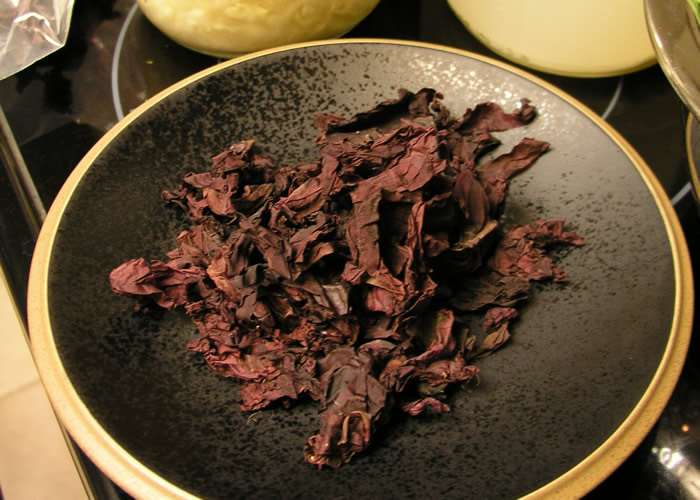
*A glass jar with rubbery gaskets or any other well sealing glass container:
It must be air tight…ish, or seal well, to create a favorable environment for all cultures, especially the more sensitive ones, to grow in.
*Coconut creme.
The coconut creme is to serve as a hardening agent when the leberwurst is placed in the fridge to harden. Coconut oils harden below 70 ºF when cooled, so they will keep the pate delectably fluffy. Otherwise it will flop and turn liquidy when it’s served or handled. Coconut is also a great source of essential amino acids, dietary fiber, protein, vitamins and minerals. It has it’s added all around culinary benefits that both enhance the flavor, texture, and nutrition of the pate.
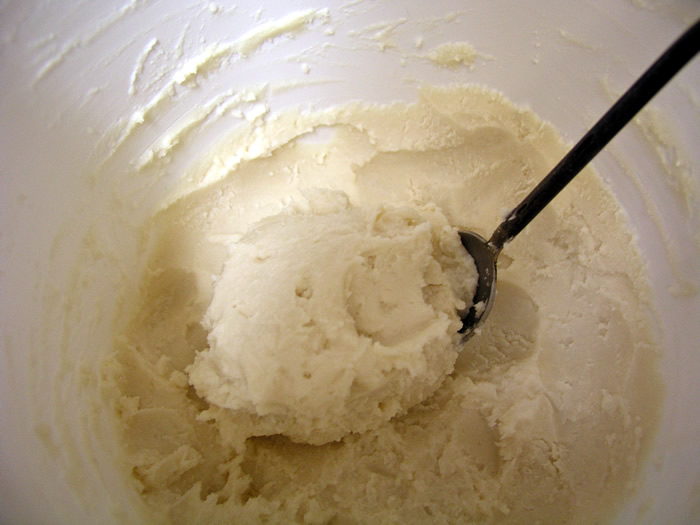
The Recipe
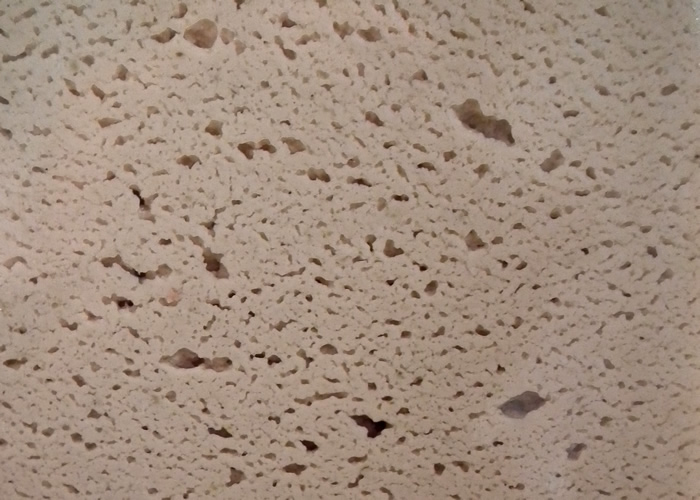
In a blender combine…
*1 cup kimchi and 1/2 a cup or more of the kimchi liquid (this is to serve as a starter).
**BLEND well
*2+ heaped tablespoons coconut creme. The more the harder the leberwurst will be once refrigerated. Don’t add too much otherwise you’ll end up with something you could stick a wick in and call a candle.
*Add dulse
**BLEND well
*Add the seed of choice (sunflower or hemp). 3 and 1/2 cups plus. Sunflower and hemp seeds are also used as thickening agents. They tend to make things get thick very fast so add a bit at a time until it juuuust starts getting difficult to blend. At that point blend it thoroughly until the seeds are no more… If it gets too thick add more liquid from the kimchi or a little water at a time BUT make sure it is not too runny. Otherwise it’ll be more like a crazy yogurt later.
**BLEND well
*Add 1 final cup of kimchi vegetables
**BLEND slightly. Just enough to chunk up the vegetables into tiny pieces to add a flavorful texture to the finished paste.
***Pour into glass container
*Add 1/2 teaspoon each of your *optional* spices, and mix in thoroughly.
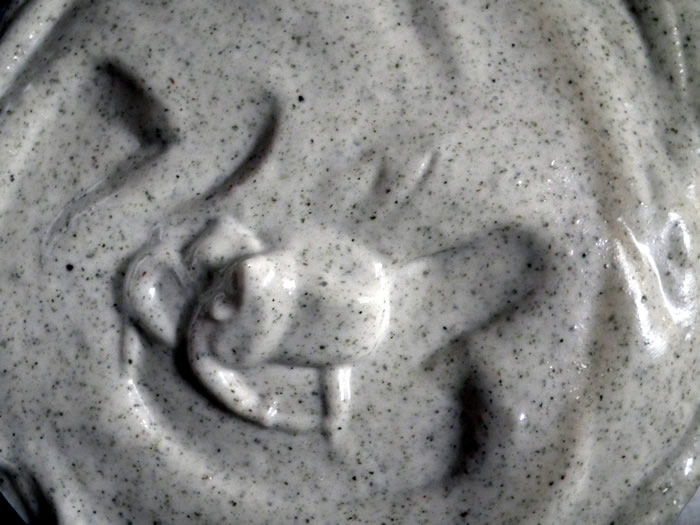
*Seal it all up and place it in a warm dark place. I use a food dehydrator for temperature controlling. A warm environment encourages the cultures to grow. The paste will rise better.
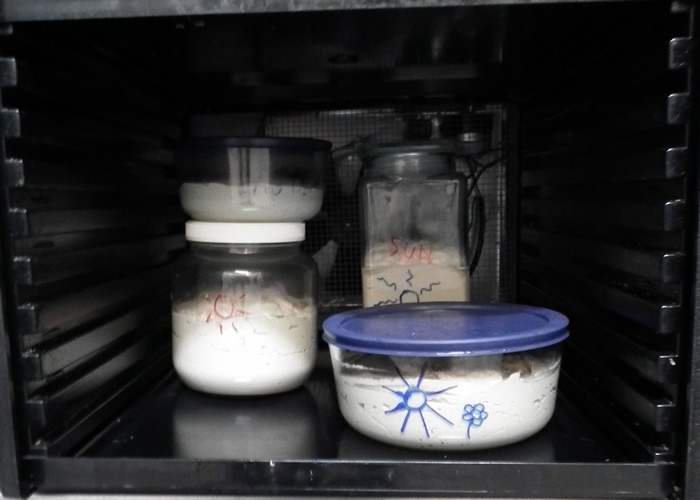
*Wait 15+ hours. Just like bread making, the paste will have risen to about twice it’s size. Once this is done place it in the fridge to let it harden thoroughly. That could be equated to “baking” it. This keeps it firm and handle-able.
Done! Serve, enjoy, spread the love!
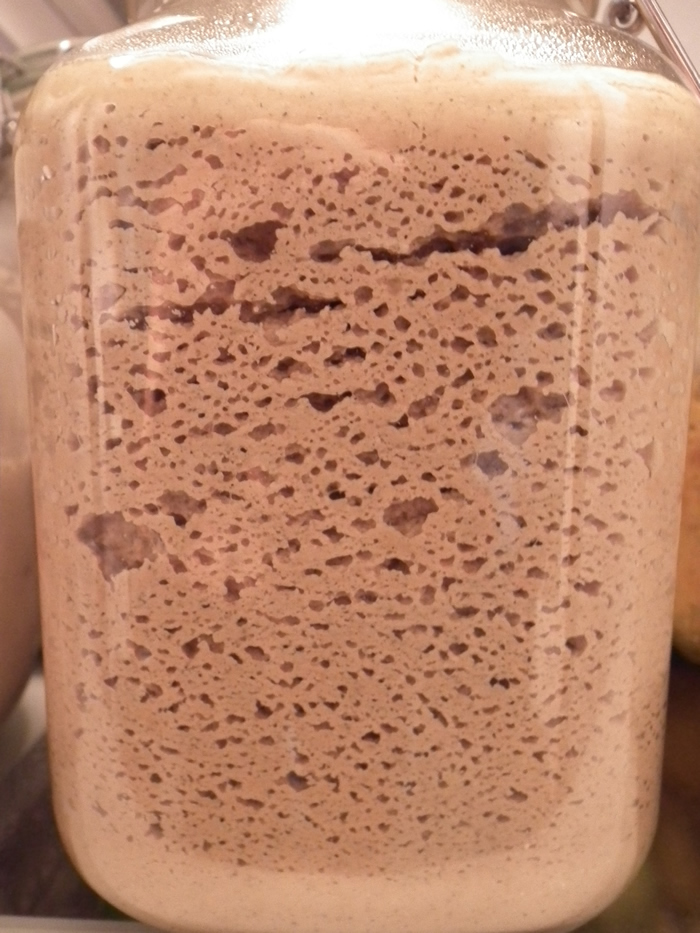
Hey, love making all kinds of fermented stuff, it’s like having a science lab in your kitchen AND you get to eat the experiment! For whatever it’s worth to you, coconut oil in moderation is probably ok for healthy people and is promoted like crazy, but is not the panacea we’d like to believe. In fact, for people like me, any fats are potentially lethal because they contribute to intramyocellular lipids, too much fat in the cells, causing all kinds of issues, especially type 2 diabetes. People (including the doctor I had been seeing…but don’t any more!) still tell me it’s from too much carbs and sugar, but the truth is high sugar is just a symptom, NOT the cause, and complex carbs are actually part of the solution. High carbs, low fat, whole foods….no more diabetes and lots of other issues I was told were “incurable” and they had me eating a ton of pharmaceuticals to “manage”! Anyway, here’s some more reliable info if anyone is interested, this site rocks!
http://nutritionfacts.org/questions/whats-the-latest-verdict-on-the-proclaimed-health-benefits-of-coconut-oil/